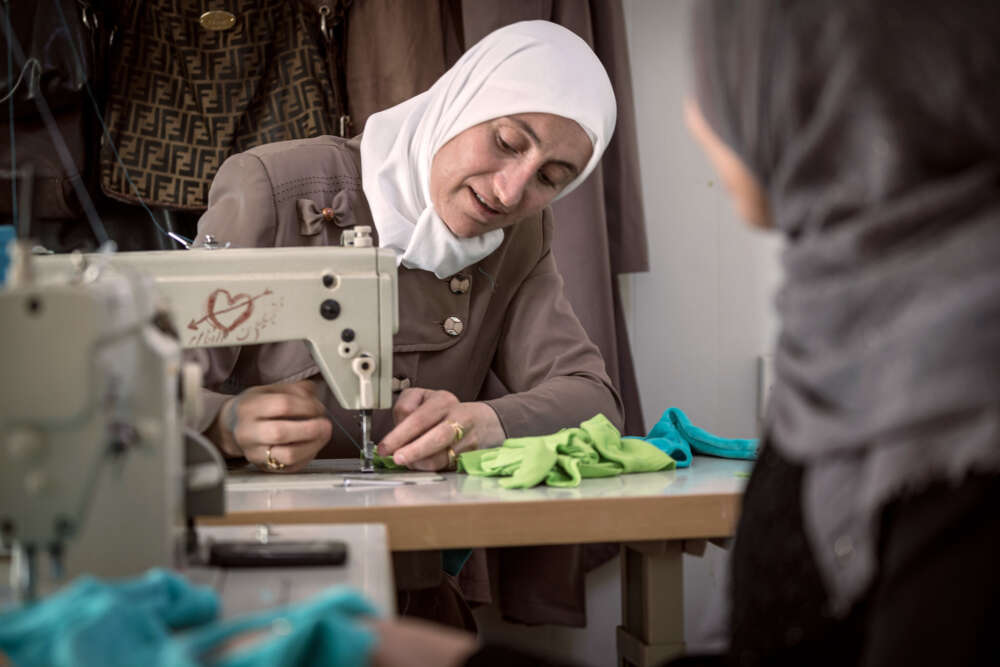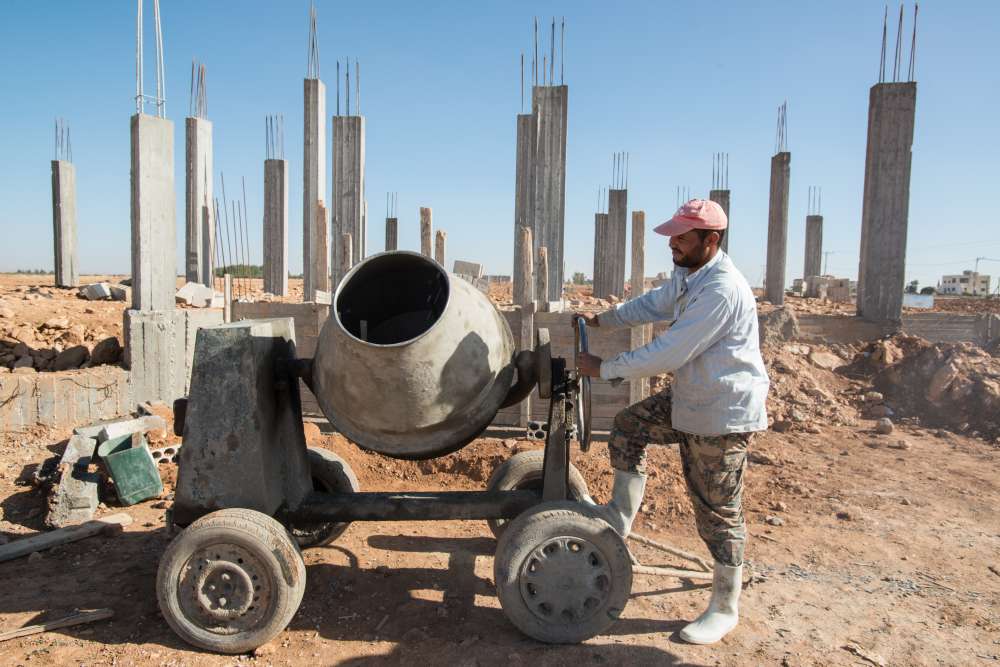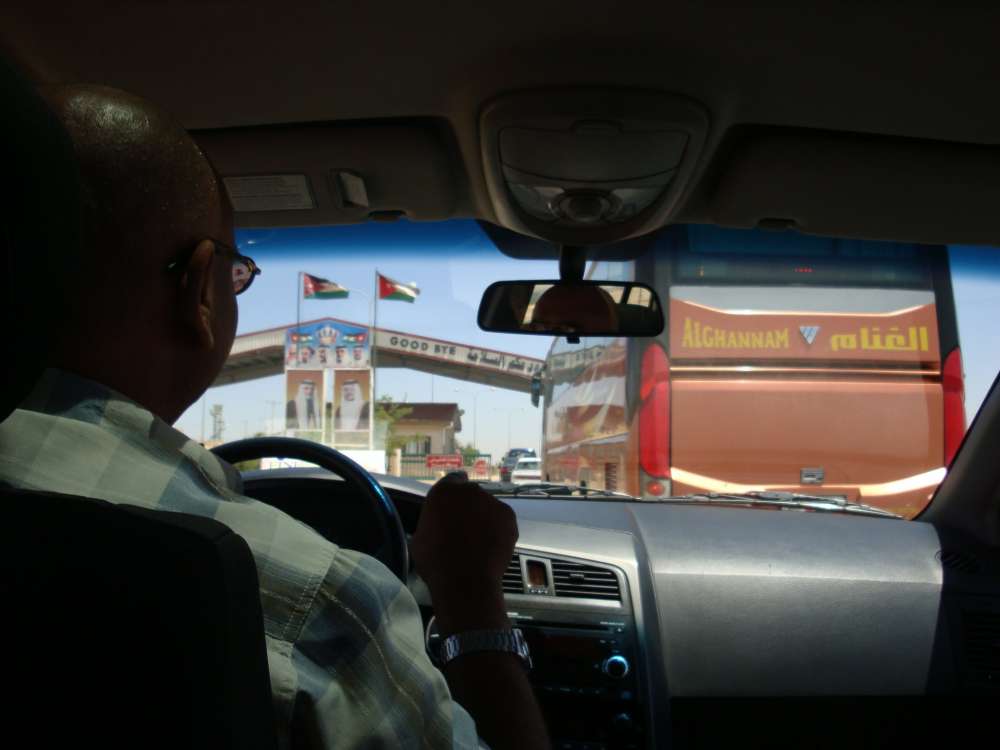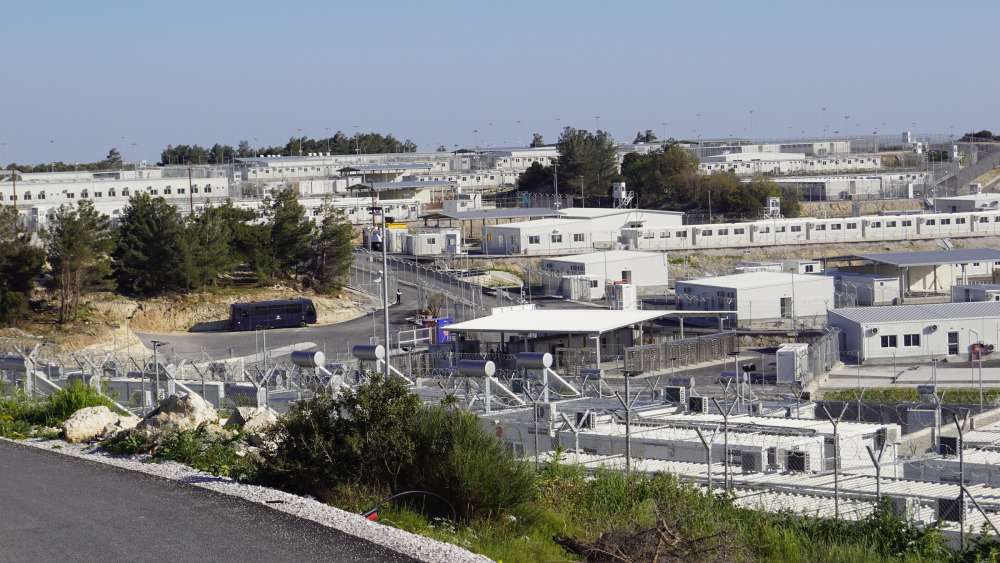Applying the HDP Nexus Approach to Better Respond to Forced Displacement
Lessons and Experiences from the Partnership between the German Development Cooperation and the United Nations High Commissioner for Refugees

Authors:
Nur Abdelkhaliq Zamora
Ima Bishop
Sarah Bolger
Julian Lehmann
Fabiola Padilla Diaz
Julia Steets
Sam Sternin
Gudrun van Pottelbergh
Nick York
Forced displacement demands — now more than ever — innovative and forward-looking solutions. Supported by the German Federal Ministry for Economic Cooperation and Development, GIZ and UNHCR have explored diverse partnership modalities in displacement contexts — moving beyond parallel aid systems toward sustainable, integrated approaches. Joint efforts have focused on including refugees within national systems, ensuring equitable access to health care, local schools, and electricity alongside citizens.
This longitudinal study covering the program demonstrates how UNHCR and German Development Cooperation are pioneering Humanitarian-Development-Peace (HDP) Nexus partnerships to strengthen support for refugees and host communities. Drawing on six years of joint experience across eleven countries, it offers actionable insights and practical lessons for policymakers and practitioners seeking to build partnerships to advance refugee inclusion and build resilient host societies.
Since 2018, the German Federal Ministry for Economic Cooperation and Development (BMZ), the Deutsche Gesellschaft für Internationale Zusammenarbeit (GIZ), and the United Nations High Commissioner for Refugees (UNHCR) have worked together to implement the Global Programme Support to UNHCR in Facilitating the Operationalization of the Global Compact on Refugees in the Humanitarian-Development-Peace Nexus (SUN Global Programme or SUN-GP). SUN-GP is a collaborative GIZ-UNHCR initiative, leveraging each agency’s complementary strengths to implement HDP nexus approaches and operationalise the Global Compact on Refugees (GCR). Additionally, SUN-GP served as a platform for capacity building, knowledge sharing, and lesson learning. It enabled partners to refine HDP nexus approaches and promoted sustainable solutions for displaced populations and host communities.
Purpose and scope of this study
This joint study was conducted between February 2022 and March 2025 by IOD PARC in partnership with the Global Public Policy Institute (GPPi). It focuses on UNHCR-GIZ cooperation within SUN-GP to answer: ‘How can HDP nexus approaches be used to better respond to forced displacement and put into practice the objectives of the GCR?’ It documents lessons learnt, achievements, and areas requiring improvement in future collaborations. The study is primarily aimed at supporting learning for UNHCR and GIZ, but also by other humanitarian and development actors seeking to engage in HDP partnerships. The study has the following main focuses:
- UNHCR-GIZ partnership focus: i) comparative advantages of UNHCR and German Development Cooperation; ii) SUN-GP implementation models; and iii) contextual and partnership enabling and constraining factors; and,
- HDP approaches focus: i) setting of collective outcomes for GCR implementation; ii) contributions to collective outcomes; and iii) Accountability to Affected Populations (AAP) and conflict sensitivity as cross-cutting issues.
The joint study builds on findings from an iterative process of extensive document reviews, in-country and desk-based data collection, and stakeholder consultations. Field missions and follow-ups were conducted in Mexico, Mauritania, and Mozambique. Desk-based research covered Niger, Ethiopia, and Uganda.
Key findings
SUN-GP has supported host governments in integrating refugee support into national development frameworks by providing funding and technical expertise and fostering long-term planning aimed at the inclusion of refugees in national systems and economies. The collaboration between GIZ and UNHCR has strengthened in-country stakeholder engagement, leveraged past learnings, and refined implementation models – each with its own strengths and limitations. However, some challenges remain. These include misaligned implementation timelines, gaps in monitoring progress, and the need for stronger coordination structures to align humanitarian and development responses with government priorities. Balancing the needs of refugees, internally displaced persons (IDPs), and host communities also remains a key challenge, particularly in environments where financial resources are scarce. Ensuring sustainable refugee integration requires early government engagement, locally led approaches, and a stronger emphasis on peacebuilding. Enhancing AAP, integrating conflict sensitivity more effectively, and addressing environmental considerations could improve future responses to forced displacement.
Interest area 1: Lessons learnt, gaps, and opportunities in partnership set-up and project design
Leveraging and capitalizing on the comparative advantage of partners BMZ/GIZ provided critical funding and technical expertise to complement UNHCR’s efforts under SUN-GP to support the inclusion of refugees in national planning for increased self-reliance and resilience. Both organizations brought high levels of trust and close government relationships to the partnership, enabling effective coordination with ministries and development partners, and alignment with broader national planning and budgeting frameworks. There are examples from various country contexts of GIZ and UNHCR effectively leveraging their respective technical expertise, presence, resources, and networks to implement nexus approaches. For example, in Uganda GIZ supports the strengthening of authorities’ local district planning by contributing to medium-term (five-year) planning processes. In Mauritania, UNHCR’s preparedness expertise supports the authorities in adopting a comprehensive approach that combines development initiatives with emergency response, which is especially critical for addressing surges in new refugee arrivals.
The partnership provided both GIZ and UNHCR with opportunities to learn how to refine roles and improve communication by building on mechanisms that worked. These opportunities were facilitated by information-sharing meetings, technical exchanges, and informal communication that supported real-time problem-solving. In Mexico, a coordination agreement clarified cooperation terms and improved workflow, while in Mauritania, efficiencies were achieved by hiring dedicated project managers.
Reflection on different implementation models
This study identifies the strengths and weaknesses of SUN-GP’s different implementation modalities: transactional, non-transactional, and joint implementation. All modalities can be effective in achieving a balanced, multi-faceted response to displacement. A few factors are important across all three modalities for enabling effective partnerships: the alignment of implementation timeframes, the establishment of effective coordination and communication mechanisms from the outset (project inception), dedicated expectation management, trust-building, and alignment of interventions with the partners’ respective technical expertise and networks. While the joint implementation modality has the potential to offer deeper partnership integration – for example when organizations work together on a day-to-day basis, sharing the same project geographies, offices, and staff – it does not inherently lead to greater success than other modalities. In addition, the benefits of this modality are more likely to be seen in the medium- to long-term as they relate to the sustainability of impact and capacity built within local ecosystems; it may not be realistic to expect immediate cost savings or efficiencies.
In terms of additional opportunities, this joint study’s findings suggest that monitoring and evaluation (M&E) practices within programs using HDP nexus approaches should be strengthened – this is true across all of the implementation modalities covered in this study. GIZ and UNHCR acknowledge the importance of measuring impacts on resilience and socio-economic inclusion of affected populations through the application of HDP nexus approaches. However, monitoring systems do not currently capture direct benefits for targeted populations, and measuring the impact on affected populations remained outside the scope of the joint study.
Interest area 2: Lessons learnt, gaps, and opportunities on HDP approaches for GCR implementation
Contributing to collective outcomes
Ideally, government-led planning frameworks for inclusion and solutions to displacement should reflect collective outcomes for different actors to align their interventions. SUN-GP demonstrated strong alignment with national planning frameworks, ensuring that interventions contributed to broader government-led strategies. Across the case study countries, interventions were designed to support national resilience-building efforts, infrastructure rehabilitation, and refugee inclusion in national services and economies. Early government engagement by humanitarian and development partners and joint strategy development at both national and local levels enhanced political ownership and contributed to the strong alignment between partners. In Ethiopia, by involving local actors and placing staff in key regions, GIZ and UNHCR were able to adapt projects and tailor solutions to resonate with specific community dynamics. In Uganda, SUN-GP supported National Development Plans and sector response plans that capitalized on the host government’s administrative structures and policy-making capabilities for refugee inclusion.
- Other success factors for operationalizing the HDP nexus included clear national-level coordination structures, locally led coordination and the application of bottom-up approaches. National coordination structures: This joint study identified good practices for whole-of-government approaches to the refugee response, which include using cross-sectoral coordination and leveraging existing structures such as the Comprehensive Refugee Response Framework (CRRF). Examples of these good practices were seen in Uganda and Ethiopia. SUN-GP supported this approach with GCR Advisors. Challenges in other case study countries included insufficient political buy-in for national planning frameworks and weak mandates of lead agencies within national coordination structures.
- Locally led coordination and bottom-up approaches: To implement bottom-up approaches, humanitarian and development actors need to achieve a common understanding with local actors, secure political buy-in, foster a sense of ownership at the local level, and strengthen participation within communities. Capacity-strengthening efforts with local governments in Uganda, income creation for municipalities through land development in Niger, and joint implementation of gender-based violence (GBV) services with local governments in Mozambique all serve as positive examples of this. However, the partnership faced challenges in fully engaging local actors in some contexts such as in Ethiopia. This was due, in part, to centralized decision-making structures, a lack of implementation mechanisms, and limited funding at the district level.
Further opportunities to contribute to the operationalisation of the GCR
Designing a partnership to complement other actors’ efforts was a key success factor for HDP interventions to advance GCR objectives. In both Mauritania and Niger, cooperation between GIZ and UNHCR complemented major investments by the World Bank in national development planning. Conversely, in other contexts, SUNGP missed opportunities to leverage synergies between HDP interventions with other actors. Cross-cutting environmental issues offer an opportunity for bringing humanitarian, development and peace actors together to achieve GCR objectives. While environmental issues were part of SUN-GP in some settings (Energy Solutions in Displacement Settings – ESDS), there is potential to more systematically address environmental issues, including climate resilience.
Integration of AAP and conflict sensitivity as cross-cutting issues
The partnership has produced good practice on conflict sensitivity and social cohesion, but there are additional opportunities for strengthening AAP and making these areas more systematic.
- Accountability to Affected People: UNHCR and GIZ employed basic AAP tools and supported the strengthening of local actors’ capacity in this respect. Areas requiring attention include: i) moving beyond one-way feedback by communicating whether and how feedback is taken onboard; ii) checking for the inclusion of a broad range of perspectives; and iii) developing a clear approach for collecting, analyzing, and using information on community participation and AAP across partner agencies.
- Conflict-sensitivity: The study also identified promising practices used in SUN-GP for applying conflict-sensitive approaches. Ethiopia’s community-based conflict management is a positive example of the application of conflict-sensitive approaches under SUN-GP. Similarly, Mauritania’s ProNexus project balanced immediate humanitarian needs with sustainable strategies while addressing communal conflicts through awareness-raising and social inclusion efforts. Moving forward, greater collaboration will be needed to ensure partner agencies integrate conflict-sensitive programming effectively, including aligning reporting on conflict-sensitive indicators.
- Social cohesion: Well-implemented, culturally aware interventions can positively impact social cohesion when aligned with community needs. Positive examples emerged across different contexts, including the integration of women into brickyard workforce initiatives, which led to reduced GBV reports in Niger, Peace Circles that fostered social cohesion and trust among communities in Mexico, and One Stop Shops that centralized protection services for both refugees and host populations in various countries. However, resource scarcity often created competing priorities, requiring careful negotiation to prevent tensions between displaced populations and host communities. Funding constraints sometimes led to perceived inequities in aid distribution, undermining social cohesion. Furthermore, government-led integration efforts sometimes overlooked grassroots discrimination issues.







